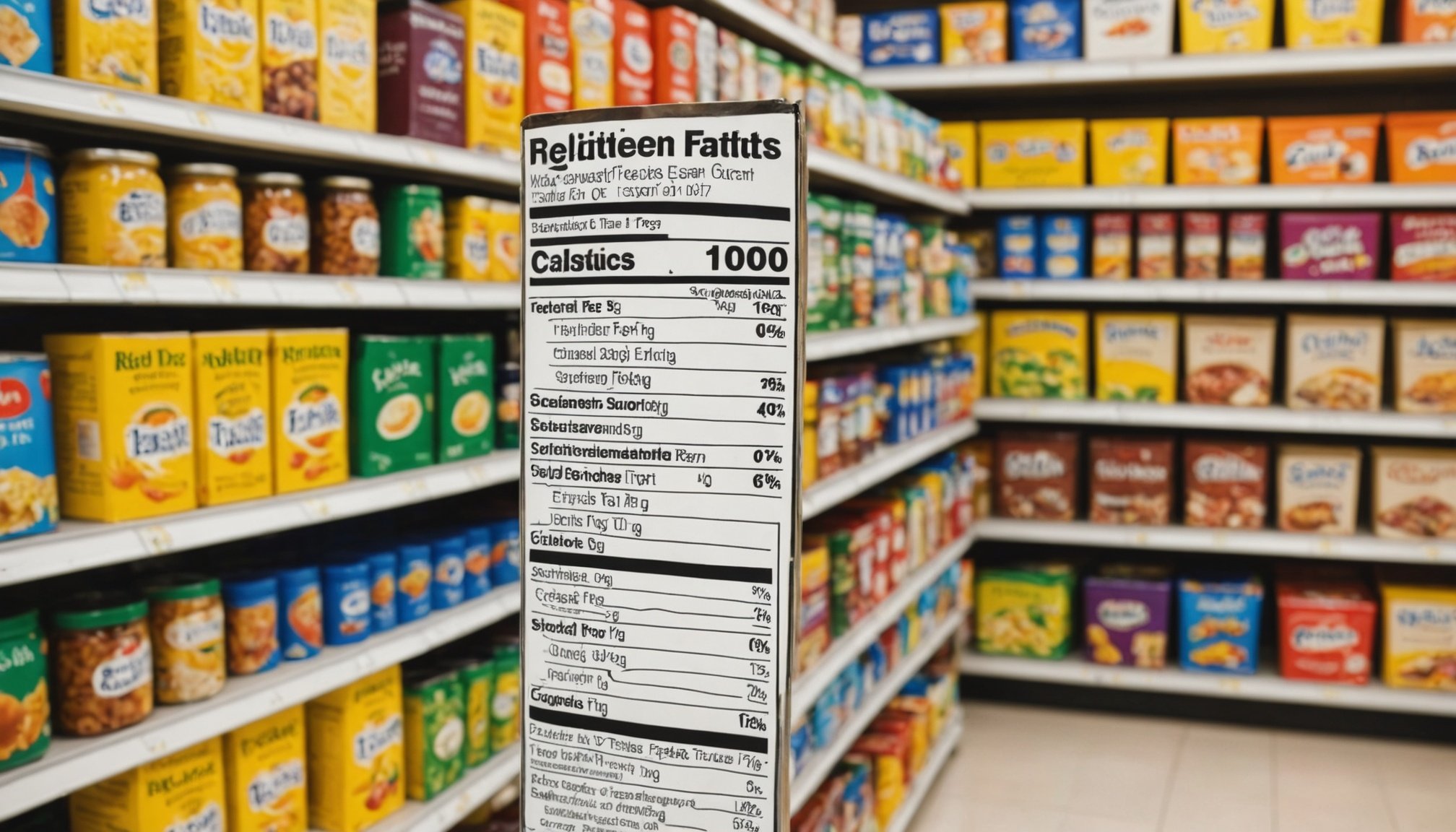In today’s fast-paced world, healthy eating remains a priority for many. As consumers, you face an overwhelming array of food choices that can easily lead to confusion. The key to making better choices lies in understanding how to read food labels. These labels can be your best ally in selecting healthier options, but only if you know how to interpret the information they provide. This article aims to guide you through the best practices for reading food labels, ensuring that you make informed decisions for your well-being.
Understanding Nutritional Information
Deciphering the nutritional information on a food label is a crucial step towards healthier eating. Nutritional labels provide essential details about what you’re consuming, including quantities of calories, fats, carbohydrates, proteins, and vitamins.
This might interest you : How can I create a meal plan that emphasizes whole foods for weight management?
When examining nutritional labels, focus on the serving size first. All the nutritional information provided relates to that specific amount of food. Misinterpreting this can lead to unintentionally consuming more than you intended. By comparing the serving size with the portion you actually eat, you can better gauge whether you’re meeting your dietary goals.
Next, consider the number of calories per serving. Calories measure the amount of energy the food provides. While not the only factor in determining a food’s healthiness, being mindful of calorie intake is vital for weight management.
Also to see : How can I prepare satisfying salads that keep me full and slim?
Pay attention to macronutrients like fats, carbohydrates, and proteins. Check the types of fats listed, as not all fats are created equal. Foods high in trans fats or saturated fats can negatively impact heart health. Instead, opt for products rich in unsaturated fats. Regarding carbohydrates, look for items high in dietary fiber, as fiber is crucial for digestive health.
Lastly, don’t overlook the micronutrients. Essential vitamins and minerals, like calcium and iron, contribute to overall health. Ensuring your diet is rich in these nutrients can help prevent deficiencies and support bodily functions.
Identifying Hidden Sugars and Sodium
One of the greatest challenges in choosing healthier food options is identifying hidden sugars and sodium. Both can have significant adverse effects on health, contributing to conditions like hypertension, diabetes, and heart disease.
Sugar can be particularly deceptive, often masquerading under various names. When scanning labels, look for terms like sucrose, high fructose corn syrup, or maltose. These indicate added sugars that can increase your calorie intake without providing nutritional benefits. Foods labeled as ‘low sugar’ or ‘natural’ can still contain high levels of added sugars, so always verify by checking the ingredients list.
Sodium, while essential in small amounts, can be unhealthy in excess. Many processed foods use sodium as a preservative, making it easy to consume too much. Examine the sodium content listed on the label and compare it with the recommended daily intake. Opting for products labeled as ‘low sodium’ can be a simple yet effective way to reduce your intake.
To keep sugar and sodium in check, prioritize whole foods over processed ones. Fresh fruits, vegetables, and whole grains typically contain lower levels of these substances, offering a more balanced and nutritious profile.
Decoding Ingredient Lists
Ingredient lists can be daunting, especially when they contain unfamiliar names. However, understanding these lists is crucial for making informed food choices. Ingredients are usually listed in descending order by weight, meaning the first few ingredients are the most prominent in the product.
When reading ingredient lists, look for recognizable, natural ingredients. Avoid foods with long lists full of chemicals and additives. These often contain preservatives, artificial flavors, and colorings that may not be beneficial to health.
Be cautious of ingredients like partially hydrogenated oils, which are a source of trans fats, and artificial sweeteners that can affect your health in the long run. Opt for products that use whole, natural ingredients, as these are generally more nutritious.
Understanding terms like ‘organic’ or ‘natural’ can also guide you in choosing healthier options. While ‘organic’ indicates that the product was made without synthetic fertilizers or pesticides, ‘natural’ often lacks regulation. Reading the ingredient list gives you a clearer picture than relying solely on these labels.
Making Sense of Health Claims
Food packaging often comes with bold health claims that can be misleading. Terms like ‘low fat,’ ‘light,’ or ‘cholesterol-free’ may sound appealing, but they don’t automatically mean the product is healthy.
It’s vital to remember that such claims are often regulated differently across regions. ‘Low fat,’ for instance, may still mean the product is high in sugar or other unhealthy ingredients. Always back up these claims with a thorough examination of the nutritional information and ingredient list.
In addition to these regulated claims, some manufacturers use marketing tactics to make their products look healthier than they are. Words like ‘superfood’ or ‘detox’ have no scientific basis and can be more of a marketing gimmick than an indicator of health benefits.
For a truly health-conscious choice, focus on the overall nutritional profile of the product instead of individual claims. By understanding what these terms mean and verifying them against the label’s factual information, you can make more informed decisions.
Navigating food labels can feel like a maze, but by equipping yourselves with the right knowledge, you can make healthier choices. Understanding nutritional information, spotting hidden sugars and sodium, decoding ingredient lists, and interpreting health claims are essential skills for any health-conscious consumer.
These best practices empower you to look beyond marketing claims and take control of your diet. As you become more adept at reading labels, you’ll find it easier to choose foods that align with your health goals, ensuring a balanced and nutritious diet. In today’s world, where information is abundant, the power to choose wisely is in your hands.











